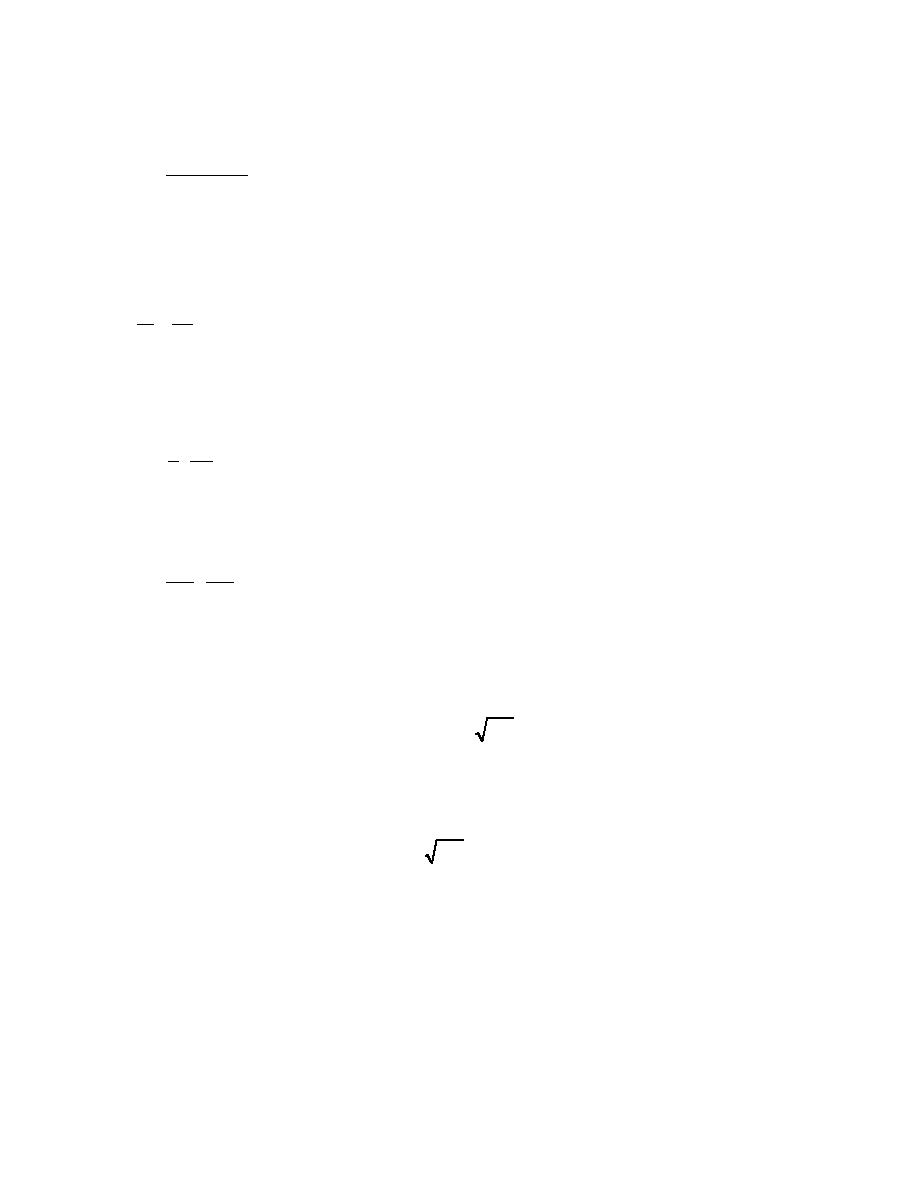
ERDC/CHL CHETN-IV-34
June 2001
and comparison of Equation 9 with the empirical Equation 2 gives the decay coefficient λ as:
Vf
λ=
(10)
kd ( D / ρ)
1/ 3
The dissipation D can be estimated if the nearshore profile updrift the channel has an
approximate equilibrium shape. The development of Dean (1977) then gives the energy
dissipation as:
D 5 3/ 2 2 3/ 2
=
g γb A ha
(11)
ρ 24
parameter, which Kriebel, Kraus, and Larson (1991) showed could be estimated by:
1/ 3
9 Vf
2
A=
(12)
4 g
Substituting the expressions for D/ρ and A into λ yields:
1/ 3
V f2
3
λ=
(13)
gh
4kd
a
Equation (13) determines λ as a function of the sediment fall speed and ambient depth, and it is
expected to have the correct functional dependencies. Quantitative accuracy must be determined
empirically through the value of kd, which is expected to be independent of environmental
factors. Based on the sediment streamer trap data of Kraus and Dean (1987) for nominal 0.2-mm
particle size sand, kd ≅ 0.03. The quantity V f / gha appearing in Equation 13 is a Froude
number. For typical sand sizes with fall speeds in the range of 0.02 to 0.06 m/s (Table 1), and
typical ambient depths of 1 to 10 m, this quantity is in the range of 10-2 to 10-3.
2
Figure 3 plots values of p (in percent) as a function of the argument hcWV f /(haU a ) in Equation 7
for values of the Froude number Fr = V f / gha ranging from 0 to 0.02 in four steps of 0.005
and kd =0.03. For sand-sized and finer sediments, Fr is expected to be small, and values of p will
lie close to a straight line. A small value on Fr implies a small value of λ (Equation 13),
describing a concentration profile that is approximately uniform through the water column. If Fr
approaches zero (i.e., λ → 0), the trapping ratio p will be close to hcWV f /(haU a ) , which
2
corresponds to the portion of the water column upstream of the channel that ∆z constitutes.
2
However, because the quantity hcWV f /(haU a ) contains Fr, the limit Fr = 0 implies that this
quantity is zero as well. Thus, in Figure 3, the line labeled "0+" denotes an Fr-value slightly
greater than zero. In this limit, for which Fr = 0+ (i.e., λ=0), the trapping ratio will be
5


 Previous Page
Previous Page
